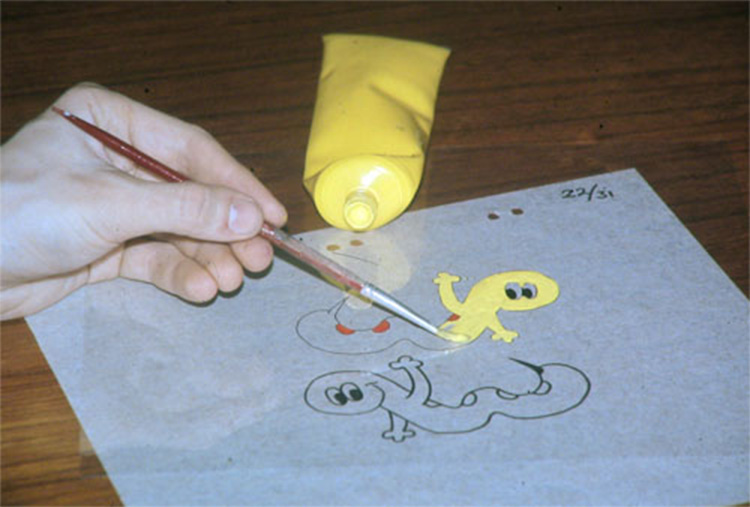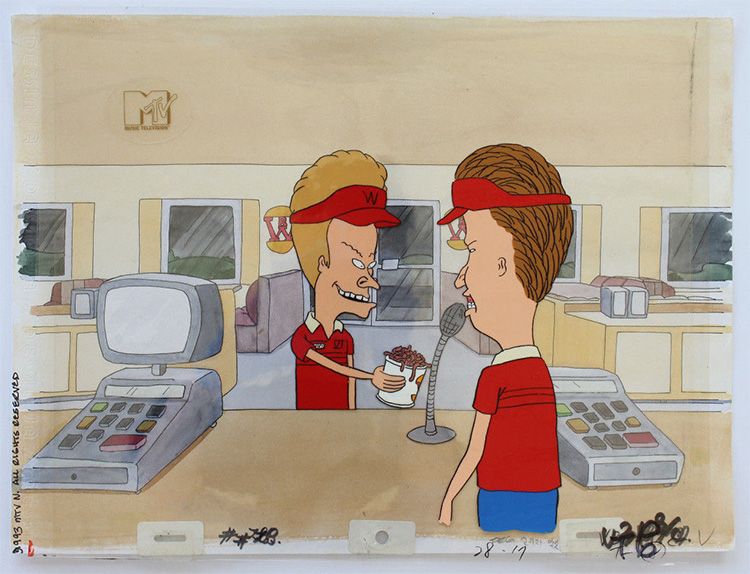What Is Cel Animation & How Does It Work?
What Is Cel Animation & How Does It Work?
TipsAnimation Disclosure: This post may contain chapter links. That means if you buy something we go a small commission at no extra price to you lot(learn more than)
Cel animation is the art of creating 2D blitheness by mitt on sheets of transparent plastic chosen "cels".
Post-obit a planning process, animators transfer typhoon drawings onto transparent sheets of plastic called cels. Each cel features 1 drawing with an outline on one side of the plastic and the color is filled in on the other.
These 'cels' are so placed over a background and photographed in sequence.
When played dorsum at a speed of 12 or 24 frames they create the illusion of move.
It'southward rare for traditional cel blitheness to be used in modern productions since everything is digital at present.
Although today'southward 2D animation borrows many techniques from cel blitheness, the work is nearly exclusively done on computers. Most 2d animations are still drawn by an animator merely digital software is used to speed up the process.
The Cel Animation Process
Cel animation is a lengthy, expensive process that demands the interest of a big team.
The magic starts with a script and is handed over to a storyboard creative person. In one case the timing of each shot is locked down, a atomic number 82 animator will draw rough sketches of each key pose and note the timing on a dope canvas.
The dope sheet is an essential tool for everyone from managing director to colorist.
It dictates the length of time a movement takes and standardizes the sequence of the cels. After the key poses are sketched out and the dope sheet completed, junior animators depict the in-betweens to smooth the movement betwixt poses.
In one case all movement in the shot is approved the pencil sketches are passed onto an inker.
The inker transfers the linework to a transparent film of thin plastic(a cel) using black ink.
As soon as the ink is dry the film gets passed off to a 'colorist' who colors in the linework using cel paint. They apply the color on the opposite side to the ink giving each cel a crisp expect with make clean, consequent linework.
While each cel is being inked and colored, more than artists are hard at work creating the backgrounds for each scene.

Because these stay on screen for longer than an private cartoon, they are typically more detailed and delicately shaded. If a character is moving through a scene, the background drawing volition be big enough to allow for that movement.
Once all the cels and backgrounds are complete they are handed to a photography team. The team layers the drawings co-ordinate to the dope sheet and takes a picture of each layered frame.
These frames are played in sequence and create the terminal animation.
Materials Used In Cel Animation
Cel animation and the evolution of plastic are closely linked.
Without sparse sheets of flexible, transparent, and colorless plastic, cel blitheness would have never been possible.
The primeval type of plastic used was chosen cellulose nitrate.
It was far from a perfect cloth.
Combustible and prone to deposition with age, it would xanthous, cockle, and expel hazardous gasses in a short period of time.
The industry tried to amend the lifetime of the cels by switching to cellulose acetate.
The acetate lasted much longer than its predecessor but eventually degraded. Due to its chemic composition it released a pungent vinegar that was commonly known every bit vinegar syndrome.
Known by animators as 'cel paint', the paint often used was a heavy, opaque acrylic or gauche.
Equally the plastic cellulose degraded over time the pigment followed suit.
Many cels at present display 'paint lifting' — an affliction where the pigment starts to flake off the plastic and crevice.
Disney has poured an incredible amount of time and money into preserving its original cels.
They have a defended facility to keep their original cels at the optimal temperature and humidity while trying to halt their degradation. You tin can read an in-depth commodity on Disney's process of cel storage here.
The Transition To Digital
Surprisingly, the concluding motion picture Disney produced using 100% traditional cel animation was Oliver and Company dorsum in 1988.
Their next film The Little Mermaid(1989) featured a scene using a new coloring organisation called CAPS(Reckoner Blitheness Production Organisation).
CAPS was a joint venture between Pixar and Disney designed to digitize cel animation and lower the cost of animation without sacrificing quality.

The system allowed artists to digitally load the animator's sketches and practise the inking and coloring process on a figurer.
CAPS sped up the workflow of animation studios considerably and they continued to push for more digital advancements.
As time went on they even began to include 3D blitheness techniques with their 2nd films.
Now nigh 2nd animation projects are completed using software like ToonBoom.
Animators and studios have private preferences in workflow with some preferring to depict sketches by hand, while others are ditching pen and paper entirely.
These days the only notable use of cel animation is done by students studying old techniques.
In this video you lot tin can sentinel the recreation of a scene from Snow White in painstaking detail, highlighting the limitations of cel animation and showing exactly why information technology took and then long.
Is 2d On The Way Out?
Following the lower performance of a few 2nd feature films Disney switched over to all 3D animation for their movies.
The last 2D feature they created was Winnie the Pooh in 2011 with no plans to develop more than 2d films in the future.
Although feature films in the Western globe have shed the art of 2D animation, Nihon consistently produces accolade-winning 2D Anime films.
Studio Ghibli is the studio behind many classic 2d animations similar My Neighbor Totoro and Spirited Away. These films continue to rise in popularity and they have no plans to switch over to 3D.
No longer the gilded child of Disney, second blitheness still has a business firm place in the world of television and feature films.
Many children's cartoons are firmly established as 2D animations with no plans to develop into the 3D sector either.
Although cel animation has become an fine art of the by, 2D blitheness is withal thriving.
Artists around the world agree that the skill and passion involved in creating blitheness volition last forever—regardless of the tools used in the procedure.
Source: https://conceptartempire.com/cel-animation/
0 Response to "What Is Cel Animation & How Does It Work?"
إرسال تعليق